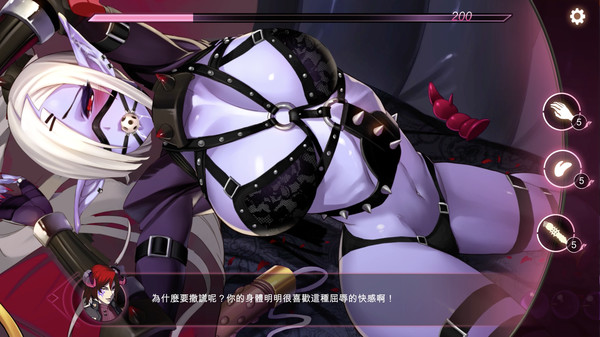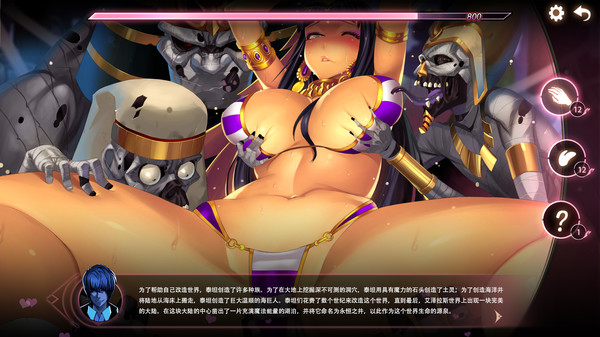Drax
Arcane
That's p. cool.







Friday The 13th Will No Longer Let You Kill Your Teammates
An upcoming patch will kill the feature because of "rampant" abuse.
In Friday the 13th, the survival horror game based on the classic horror film franchise, one player assumes the role of iconic serial killer Jason and must hunt down seven others playing as hapless camp counselors. However, he isn't the only one capable of murder; camp counselors can kill one another as well using the various weapons they find. This has led some players to deliberately kill their teammates during online matches--an issue that has become so prevalent that publisher Gun Media will be removing the feature in a future patch.
The publisher announced the decision in a post on Reddit. "[T]he biggest thing we've heard from our community with the game are issues pertaining to rampant team-killing that has unfortunately been abused by players on all platforms," the post begins. "While the mechanic's intent is designed to promote life-or-death experiences into each and every game you play, the reality has turned into more of a Battle Royale scenario to a point our team feels a change needs to be made."
Following the game's next patch, "Public Games will no longer allow counselor team-killing through weapons use against other counselor players," meaning shotguns, machetes, and other weapons that camp counselors can wield will no longer have any effect on their teammates. However, players can still kill one another by running them over with a car. "We decided on this as the alternative was abused during our beta where users would simply stand in front of the car, effectively blocking it from moving," the publisher explains.
"Our team believes that the ability to hurt other counselors is something that this game should have as it adds tension and requires players to make tough calls," Gun says. "However, we do not believe this should be a mechanic that is abused by players to the point where the vast majority of our current communications from fans are complaints of rampant/unwarranted team-killing/griefing/trolling."
Still, while team-killing may be disappearing from public matches, it doesn't appear to be the end of the mechanic entirely; it will still be allowed in private sessions for the time being, "with the hope of better options in the future."
Despite its initial troubles, Friday the 13th has sold almost 2 million copies since its launch. A physical version is releasing for PlayStation 4 and Xbox One this October, on Friday the 13th. The physical copy will retail for $40 and includes a Bloody Jason skin as well as a free clothing pack for playable camp counselors. Recently, developer IllFonic released a patch for the Xbox One version that significantly improves the game's performance and fixed a long list of bugs. A free single-player mode is also in development, though Gun Media hasn't announced a release date.
![The Year of Incline [2014] Codex 2014](/forums/smiles/campaign_tags/campaign_incline2014.png)


Where is the game that simulates making a shitty kickstarter backed video game and dealing with the backlash of your shitty game being shitty?
You can hire and fire people to manage your "social" and/or work on fixing/improving the game. All sorts of room for mini games.
I should start a kickstarter for it.
That's just YandereDev's actual life.
It also ignores the fact that a lot of the teamkilling was people killing tards who were glitching to become immortal to Jason's attacks and thus forcing the rest of the dead players to watch a tard standing still for however long the matches lasted.Are you serious? That's got to be the quickest way to kill your own game
![The Year of Incline [2014] Codex 2014](/forums/smiles/campaign_tags/campaign_incline2014.png)


Quick! Get the Doritos Pope in on this!
...The hippocampus is critical to healthy cognition, yet results in the current study show that action video game players have reduced grey matter within the hippocampus. A subsequent randomised longitudinal training experiment demonstrated that first-person shooting games reduce grey matter within the hippocampus in participants using non-spatial memory strategies. Conversely, participants who use hippocampus-dependent spatial strategies showed increased grey matter in the hippocampus after training. A control group that trained on 3D-platform games displayed growth in either the hippocampus or the functionally connected entorhinal cortex. A third study replicated the effect of action video game training on grey matter in the hippocampus. These results show that video games can be beneficial or detrimental to the hippocampal system depending on the navigation strategy that a person employs and the genre of the game.
As spatial strategies were shown to be associated with increases in hippocampal grey matter during video game playing, it remains possible that response learners could be encouraged to use spatial strategies to counteract against negative effects on the hippocampal system. One way to achieve this might be to change an action game’s design. For one example, most modern action video games are rich with environmental landmarks that could be used for hippocampus-dependent navigation; however, they also often include an overlaid head-up display which displays an in-game GPS to direct players to their next location or event (for example, the locations of items or enemies).40 Because of this, players can easily choose to navigate with a response route-following strategy without relying on the relationships between landmarks, fundamental to the spatial strategy. It therefore remains possible that action video games designed without such in-game GPS or wayfinding routes overlaid on the game’s display for the player to follow could better encourage spatial learning during action video game playing.

![The Year of Incline [2014] Codex 2014](/forums/smiles/campaign_tags/campaign_incline2014.png)
Summary
Purrfect Date is a cross between a visual novel, dating sim, and dark British comedy. You, a human, will get to date cats and uncover the secrets of the mysterious Cat Island.
Throughout the game’s seven chapters, you'll adopt the roles of multiple freshly employed research assistants on an Island almost entirely populated by cats. Choose your own adventure as you romance talking cats, balance your stats and carry out your research into the dark and questionable history of the Island.
Drawing inspiration from trailblazing games such as Undertale, Dream Daddy, Hatoful Boyfriend, and Pony Island, there'll be lots of twists, turns and alternate playthroughs to keep you replaying.
Come for the pussy, stay for the tale...

![The Year of Incline [2014] Codex 2014](/forums/smiles/campaign_tags/campaign_incline2014.png)
In this world, you will play different roles and have many stories with female characters in several different world. There are elf thief who thinks herself a noble, dragon maid who can never make up her mind, queen who loves females, forest huntress that enjoys the company of her toy-boys...
Join us in this match 3 combat game, capture the girl and do anything you want to her! Dig more into the girl if you would enjoy...


In this world, you will play different roles and have many stories with female characters in several different world. There are elf thief who thinks herself a noble, dragon maid who can never make up her mind, queen who loves females, forest huntress that enjoys the company of her toy-boys...
Join us in this match 3 combat game, capture the girl and do anything you want to her! Dig more into the girl if you would enjoy...
Thursday, Aug 10, 2017 01:00 PM RST
How “Bambi” paved the way for both “Fallout 4″ and “Angry Birds”
The animators of "Bambi" shifted away from realism and embraced the abstract
Adam Bargteil, The Conversation Skip to Comments
Topics: angry birds, bambi, entertainment news, fallout 4, film animation, films, Movies, The Conversation, Video Games, Entertainment News
Bambi(Credit: Walt Disney Productions)
This article was originally published on The Conversation.
When “Bambi” premiered in London on August 9, 1942, the fifth film from Walt Disney Animation Studios broke a lot of new ground. It was the first Disney film in which a character’s parent dies early in the film — which is now a common plot device, as in “The Lion King” and “Frozen.” It was the first Disney film without human characters. And it heralded a new development in animation: a shift away from visual realism, and toward abstractness.
Since humans began painting in caves more than 40,000 years ago, and all the way through the 17th century, artists aimed to make realistic portrayals of their subjects. But not long after Vermeer cracked the puzzle of depicting three-dimensional perspective accurately on a two-dimensional canvas, something fundamental shifted: Realism began to give way to the more stylized and abstract art of Van Gogh and Monet through Picasso and Dali to Mondrian and Pollock and the advent of modern art.
The same trend happened in animation. “Snow White,” Disney’s first animated film and the first full-length movie with every frame drawn by hand, was heralded for its realism. A multiplane camera allowed the film’s artists to use shadows and three-dimensional effects to striking effect. Just five years later, in “Bambi,” the studio was making conscious decisions to avoid realism in the artwork.
As a scholar and researcher of computer animation for movies and video games, I’ve noticed this general trend toward realism followed by the intentional adoption of more abstract and stylized imagery can be seen across the visual arts, including in electronic media.
Starting with realism
When making “Bambi,” Disney’s animators had a strong initial focus on realism, sending artists to the Los Angeles Zoo to observe deer behavior and even keeping two fawns at the studio. That helped make the depictions of Bambi, his mother and the other deer very realistic. But the producers found the initial sketches of the forest background too busy and distracting.
So they intentionally substituted an impressionistic style to depict the forest backgrounds. By incorporating more detail at the center of the action and less detail near the edges, the artists were able to direct viewers’ attention to the characters.
Spreading to video games
The development of computer animation and video games followed a similar trajectory. The first arcade games, like “Computer Space,” “Pong,” “Space Invaders” and “Asteroids,” used vector graphics to display line drawings, the electronic equivalents of prehistoric cave art.
Realism improved along with screen technology, and particularly with the increasing prevalence of raster displays, where the image is divided into a grid of individually illuminated pixels. Color brought “Donkey Kong,” and by the 1980s middle-class kids were playing “Super Mario Bros.” at home on their televisions.
At the end of the 1980s, improvements in graphics hardware achieved the video game equivalent of Vermeer’s camera obscura. Then game designers could depict three-dimensional space on two-dimensional screens. Like the paintings of Vermeer, computer games were finally able to achieve the realism of accurate perspective, and keep the images flowing in real time with the gameplay.
For the next 25 years a primary goal of the video game industry was improving realism by incorporating shadows, texture, increasingly detailed geometry and ever more complex lighting effects. By 2015 and 2016, games like Bethesda Game Studios‘ “Fallout 4” and EA DICE’s “Battlefield 1” achieved breathtaking levels of realism, though they also made clear that there remains room for improvement.
Going mobile
The advent of the iPhone in the late 2000s led video games back away from realism. The new devices almost immediately spawned thousands of simple, two-dimensional, abstract and often highly stylized games. In this case the abstraction was more a product of need than a conscious choice: Smartphones are not powerful computers and cannot compute advanced graphics algorithms or achieve the realism of high-end gaming computers. But nearly everyone has a smartphone, so the mobile gaming industry has significantly expanded the number of people who play video games.
Part of their popularity may be, in fact, that these new games aren’t realistic, but rather silly and cute. Far more people have played “Where’s My Water?” and “Angry Birds” than “Fallout 4.” There is even an “Angry Birds” movie.
Back to the drawing screen?
This trend toward — and then away from — realism also appears in computer animation for the movie industry. Computers were first used to assist in traditional animation, where a seasoned animator draws a few important “key” frames and a less-skilled assistant draws the frames in-between. In 1974 computers replaced the assistant in producing the (highly stylized) short film “Hunger.”
Over the next two decades filmmakers increasingly used computers, like the computer-generated “Genesis” effect in 1982’s “Star Trek II: The Wrath of Khan” and the T-1000 and other special effects in 1991’s “Terminator 2: Judgment Day.”
It wasn’t until 1995 that Pixar released “Toy Story,” the first feature-length animated film depicted in a three-dimensional world. Software representations of how light falls on a scene and interacts with the surfaces it hits were still primitive, and resulted in a very “plastic” look — which Pixar turned to its advantage by telling a story involving plastic toys. The human characters did not look realistic.
In the two decades since, the animation industry has made enormous progress in creating realistic virtual characters. There has been enormous progress even in the six years that separate Clu in “Tron: Legacy” and Grand Moff Tarkin in “Rogue One.” Before the end of the decade, we may see virtual characters that are indistinguishable from real actors.
Moving back to stylized designs
In movies now, we are again seeing artists intentionally abandoning realism for stylization. Director Steven Spielberg originally planned his 2011 adaptation of the “The Adventures of Tintin” as a live-action film, but his fellow producer Peter Jackson convinced Spielberg to shoot the film in a digital motion-capture studio to create a more stylized look that would more closely resemble the original comic.
The choices of moviemakers to use or not use realism have become artistic in nature. The 2.5-dimensional short “What to do with CO2,” made in 2013, is compelling because it isn’t realistic.
Similarly, in 2015 Netflix used both realism and stylization for artistic effect in “The Little Prince” — where the real world of the Little Girl was portrayed realistically, but her imagination of the world of the Little Prince is shown in stop-motion-like scenes.
Across all this time and all these technologies, a trend seems clear: Humans try to express reality. Once they do, they go back to making art.
Adam Bargteil, Professor of Computer Science and Electrical Engineering, University of Maryland, Baltimore County
Article is sorta kinda interesting, but really just a very shallow overview of how animation styles apply to video games, with a shitty clickbait title:
Since humans began painting in caves more than 40,000 years ago, and all the way through the 17th century, artists aimed to make realistic portrayals of their subjects. But not long after Vermeer cracked the puzzle of depicting three-dimensional perspective accurately on a two-dimensional canvas, something fundamental shifted: Realism began to give way to the more stylized and abstract art of Van Gogh and Monet through Picasso and Dali to Mondrian and Pollock and the advent of modern art.
So i gotta goodbye my next Witcher 3 minimap? Goodbye gps, hello boyscouts. No, i didnt mean you, mr. Troll, i thought this was a turn for my house... oh screw it.Impact of video games on plasticity of the hippocampus
http://www.nature.com/mp/journal/vaop/ncurrent/full/mp2017155a.html?foxtrotcallback=true
...
So according to this, playing first-person games with minimap and quest markers can make you dumber, and playing first-person games without minimap and quest markers can make you smarter.







